Objects of Our Affection: Notes on tables, chairs, and that odd-shaped thing only you love
Love your writing chair? Write about it (and share it with us)
When furniture started sneaking into my writing
I have watched with a degree of amusement how furniture and other objects keep showing up in my writing over decades. They pull me into memory, into feeling, into dreaming. The ones I shared here received a lot of love. Little did I know I was slowly inching my way towards engaging more with restoring furniture and making new ones.
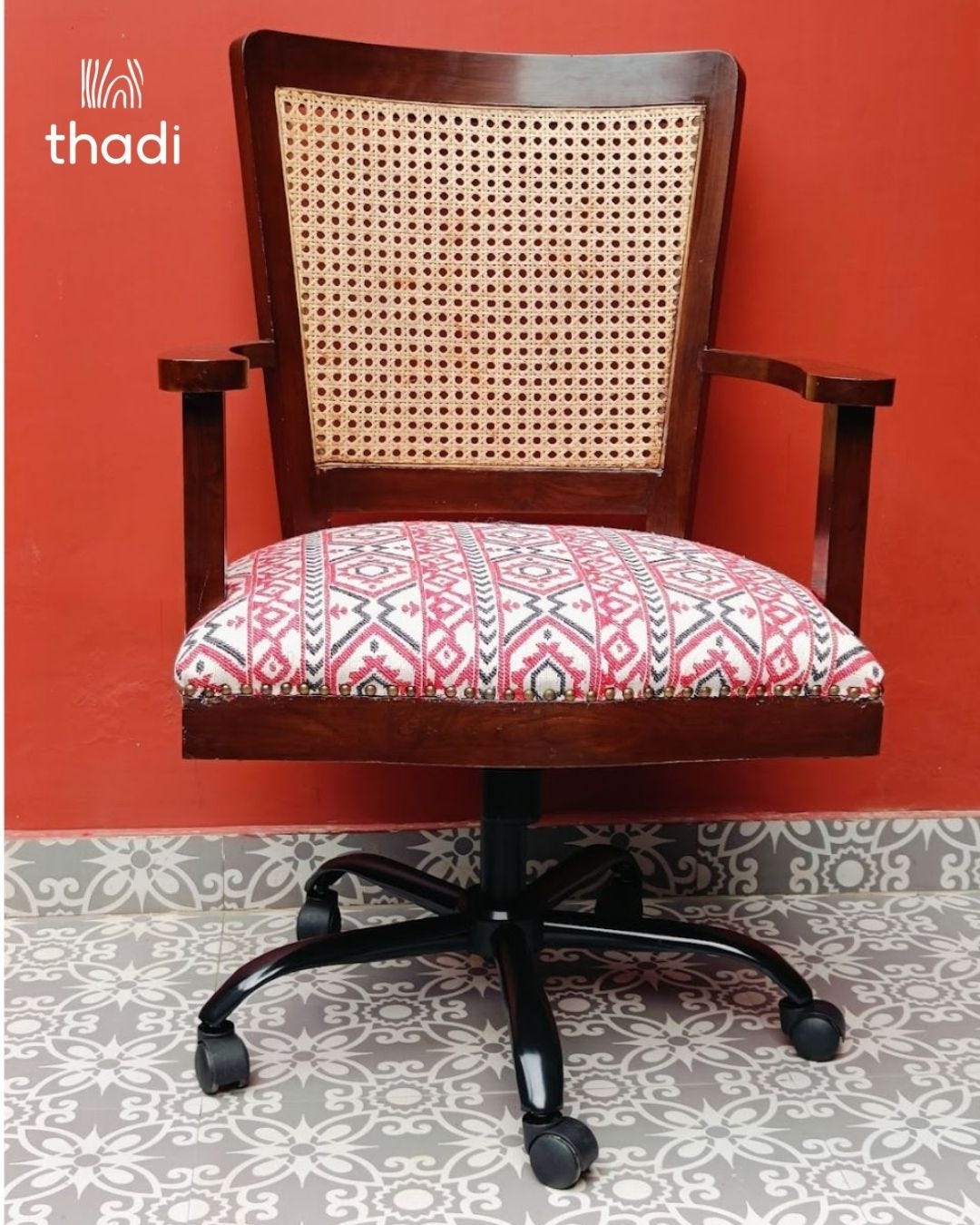
I dreamt of Thadi1 with my sister for a few years and we started working on the dream at the beginning of this year. As we feel the joy of working on pieces we also wonder at - What draws some of us so deeply to pieces that we make home with? One might call it taste, creativity, class, consumerism and right alongside are beauty, memory, and the act of making space for ourselves.
Objects of Our Affection (OOA) is an exploration of these curiosities. We are gathering stories about the inanimate that bring our spaces alive! The desks, chairs, teapoys (remember when this was the word in currency) nightstands, tables, and odd pieces that hold memory, or help us create new ones. Tales of our attachment, improvisation, inheritance, and intimacy are told through them. Two months ago, I put out a tentative call for others to join me in this exploration. The response was heartening. People shared micro essays about what makes their home and workspaces their own. Sharing here a compilation of the first eight of these micro essays and excerpts from larger essays. Through their writing about their pieces, contributors reflect on creativity, belonging, friendship, and family.
Here is a nudge
If you are called to write on this theme, you can use there prompts. Or ignore them and do your own thing!
The table I swore I’d throw out.
The drawer (or shelf etc) of shame (a.k.a. the clutter corner).
This dining table has witnessed...
That one thing in the house no one likes but me.
If you write, we would love to share your words in this exchange. Micro-essays, stories, poems, even fragments are welcome. Send us your words, or a link to something you’ve already written.
Start first by relishing these contributions.
1. Ghar Jaisa Kuch Kuch
Sanobar Sabah
Three generations of my family have lived in the Gulf. I've moved through eight apartments in a decade, living like nomads as we poured our savings into building a home back home. My current house is a patchwork of sale items or second-hand furniture. I've grown up with a sense of detachment from the things that fill my house - my furniture and I coexist but avoid any intimacy.
With time though, as my middle-aged body guides me toward my ultimate truth, it shows me that all I've ever needed is a gentle, nurturing space that lets me simply be. I’m now allowing myself to anchor in the transient nature of my life – beginning with my nightstand—a bedside table that came with a massive bed, resold to us by my husband's friend before he left for Bangkok. It's been beside me for about nine years now - it's not the dark wood I dream of, but painted to look like it - a close second.
After years of "saving" my precious belongings, I'm finally allowing them to make their presence known. My nightstand now holds a black & white picture of my Amma and Nana Abba, photos of my children when they were little, and a gifted framed picture of my father and me. A handwritten card from a writer friend. Sometimes a vase of fresh flowers. I love how my modest lamp casts warm yellow light over all these objects, highlighting and preserving memories. The way homes normally should.
2. Found Forgotten and Finally Home
Lakshya Mahalwal
Tucked away in a dusty terrace shed of my in-laws’ house, behind a pile of discarded stuff, with potlis of old clothes on it, I spotted them—a pair of tired, sun-faded armchairs. They were worn, almost forgotten, their rattan base, their wood dulled under years of grime. But something about their shape, their quiet elegance, made me pause.
I asked about them. “Oh those?” my father-in-law chuckled. “They’ve been here forever—probably over 65 years old. Nobody’s looked at them in decades.” I couldn’t stop thinking about those chairs.
So I brought them home. What followed was part restoration, part resurrection. I stripped back the barely there strings, polished the wood, and gave them new life without erasing their past.
Every scratch and curve whispered stories from another era—conversations held, books read, cups of chai shared on quiet afternoons. Now they sit in our living room—sturdy, beautiful, and full of character. A daily reminder that sometimes, the most soulful pieces are the ones with a history.
3. The women my tables became
Roshni
We reached out to some writer /artists friends to write about their workspaces for this series, when I suddenly asked myself this question.
What do these writing spaces mean for me?
The three tables that I routinely sing about are actually as simple as they come. What then about them makes them so integral to my work life. As I mulled over these, three women emerged, let me tell you a little about them.
Chechi (elder sister)
A regular longish rectangular table
I recently heard of chatter around the elder daughter syndrome and realised that I have only one or two traits. This table though has it all. She can hold together a lot.
Today at one point she held my laptop, a big screen, a keyboard, a mouse, notepad(s), medicines, water bottle, Begum (our cat), food and miscellaneous little things. I could probably place the laundry basket alongside all this too.
She is the Chechi I never was and the Chechi I needed. When I’m with her, I multitask, switch between one kind of work and the other, get up and come back repeatedly. Many things are done and anything is possible.
Kunjamol (little one)
A regular smaller table
She is tiny but mighty. She is a specialist and has a single mindedness that I envy. She can either be a bedside table or a writing table or a worktable. She refuses to be actively more than one thing at a time.
So, I approach her with intention and a timer.
Usually to try morning pages or writing. She assures me, that all else can wait. The writing must not. Usually with her it flows. There is play and such joy.
She likes being useful. So during the dry spells, she becomes a table for the clutter. Things that don’t really have a defined spot or I have simply forgotten to put away.
Kootkari (girlfriend)
A floor table, bigger than usual
She is a custom made beauty. I work with her when I know I don't want to get up for at least two hours (knees and all). Short meetups don't really work when it comes to old friends.
So I take what I need and sit on the floor and plonk stuff around me and on her and start on whatever task needs this level of ease and focus. Usually writing or research and work related reading... sometimes doodling.
Like girl friends, there are no rules of propriety here, we take to Sukhasan in dresses and sit. In winters she comes onto the bed. Begum can snooze next to under it, or if I get up she may choose to capture it entirely. A woman needs friends her cat can trust.
(We have a new and improved version of the kootkari as our latest offering from Thadi)
4. A desk becomes a companion
Viprasha Dang
There is a certain sanctity I associate with desks. Whether it is the one I write on at home, a work desk that bears the weight of deadlines, or even my dining table that I momentarily treat like my work corner, desks have always felt like extensions of my mind. They anchor me. Perhaps it is the quiet formality they carry, the implicit invitation to sit down and mean what you do. My brain has been trained, or maybe innately designed, to believe that truth begins at a desk. Once I am seated, thoughts organize themselves. Ideas take shape. The clutter clears.
I am particular about how my desk looks. Flowers are always the first touch. I often place objects that I love, ones that do not shout but sit with quiet significance. A candle, perhaps, a stack of books I may not read today but want nearby. Everything has a reason. Everything is chosen.
My desks have witnessed many versions of me. They have held my exhaustion, my excitement, my ambition. They do not speak, yet they respond. In stillness, they mirror focus. In chaos, they offer calm.
Over time, a desk becomes a companion, not just to the work, but to the self that shows up every day with the intent to create something honest.
5. Der aaye durust aye
Farah Naaz
What would you say of a writer who keeps changing her desk? Impulsive, innovative or reckless. Well turns out that this writer has as much writing desks as her ideas.
No not really. Just a couple of them.
My sofa, my son' s study table (for its practicalities or when I am missing him), my office table, my bed, and my daughter's table (for the ac and the view). My latest is this. It has been my partner for some months now. It's steady ,rock solid and is near the window where my stray cat visits me. Simba, Chimbu and I are a team when writing drafts. Oh you can say the same for Frida Kahlo. I have invoked her spirit to help me write. She did help me when I painted her to get over anxiety during the dreaded Covid waves. That was a surprise to me- the paint bit.
The desk was gifted to me by my parents. The same piece exists in their home. It is teak wood and lovingly custom made some years ago for holding knickknacks,. The other day, I found a ghunghroo and flute inside it. Remnants of my children’s interests. I let them be. It is here where I write my pieces. It is where I dream as I write. Some days I cry, some days I write as if I am possessed and some days, I just watch the world get by.
This desk has been for me for the past 25 years. As they say - der aaye durust aye.
6. Barrel and Brush
Supriya Devarajan
I'm no artist. Growing up in Germany, I was called "Tollpatsch," which essentially means clumsy klutz. We were graded between 1 and 6 in school, which is equivalent to the A-F grading system. 1 is outstanding, and 6, obviously, the opposite. My grade in art, or “Kunst” as it is called, was always between 4 and 6.
I had always considered myself a right-handed person with two left hands. But then I saw the "Peepa" (Tamil for barrel). My brother and I were clearing up our home in Chennai after our parents passed away. It was an emotional and tiring affair. While clearing the attic, I came across two barrels. They were cream-coloured, ancient and rather dirty. They had belonged to my paternal grandmother, Soundaravalli. Her mother, my great-grandmother, gave them to her when she became a bride at the ripe old age of twelve. They were meant to store rice.
I sat on one of the barrels and found it rather comfortable. And that’s when the idea took root. I decided to paint the peepa- my little DIY project, my art therapy. I brought it home to Bangalore where it sat in one corner of my balcony disconsolately for a couple of months.
I looked at it and wondered what on earth I was going to paint on it. Considering my non-existent artistic skills, I wanted to choose a very simple motif. I had a pen stand decorated with a Worli art pattern on my study table, and I decided to copy the design.
I spread out several newspapers in my balcony and began working on my masterpiece. I spilt paint everywhere, but the end result was worth it! I felt better- art does do wonders, and my grandmother was happy it wasn’t dirty anymore.
Ladies and gentlemen, I present to you, my pièce de résistance " The Worli Peepa." Please be kind, I possess an artistic temperament now!
It is ideal to store all my letters, relics from a bygone era- lock, stock and barrel. Sorry, I couldn't resist that one!
7.What is this thing with me and chairs?
Preeti Subhash
Maybe it started with Appachan’s easy chair. Wooden frame, fold-out leg rests, sling seat.
He’d sink into it every day with newspaper and we would wait our turn to be on ot like it was a joyride. Most memory of that chair has him on it or us kids competing to get onto it.
We have always been a house full of chairs. Most homes are. Now with home offices we have added work chairs to the mix too! Cane, wood, stools, chairs, ottomans. Over these years our dining table adopted three different kinds of chairs around it!
But I wanted my chair. One that I wouldn’t have to squeeze into a corner. I work from home most days. My workstation is big, and I spend hours there. Why not take my araam as seriously as my kaam I thought?
So, I designed one. Tall-backed, upholstered, perfect headrest, and an ottoman. Not minimalist and lean like like Appachan’s. But fleshy and space taking. Roshni was so shocked, why do you need such a big chair (Psst she got a similar one made after a few years)! This chair is my throne of sorts. Only I’m no Maharani (that title is Begum’s)! I eat, nap, chat with friends on this, and do all my research for work on it. Most importantly Begum loves sleeping on my lap as I sit and scroll. This chair is a whole zone now. Ask the family.
Everyone sits on it when I’m out. Just like Appachan’s chair in that way!
8. Bose, Buddy, Barter, Buy
Savvy Soumya
With age comes maturity. With our age, our ruinous-ness matured. If we have gone together to buy curtains (me) and a lamp (him), both of us will end up buying both curtains and lamps…and many other things. Our mutual shopping is not based on needs. It isn’t based on science or commerce either.
It is an art. The art of mutual destruction. The inexplicable art of mutual destruction.
One such inexplicable episode is the furniture swap. Something our parents have grappled to understand. A lamp shade and a doormat in exchange of a foldable 6-seater dining table, a bench, two cane chairs, two cushions and a large double-seater futon. For context, I had been grovelling for the lampshade — a sort of a chandelier of bunched up thin bamboo baskets — for nearly a decade. I must have seen it at his house first in 2008.
He had bought it at the Surajkund fair a few years ago, so I went to the fair the very next year. I couldn’t find it there so I begged. I checked online. Nothing. I continued to beg (and threaten and grovel). At different points, I tried bribe, barter, and blackmail. Nothing. Nine years.
FINALLY.
“Ok fine take it,” he said. I sensed a ‘but’ coming and so I jumped in — “you wanted a dining table, take mine”. I was on the slippery slope of barter hill. The rest as you know is history. He threw in the doormat to make the exchange look less skewed, I think.







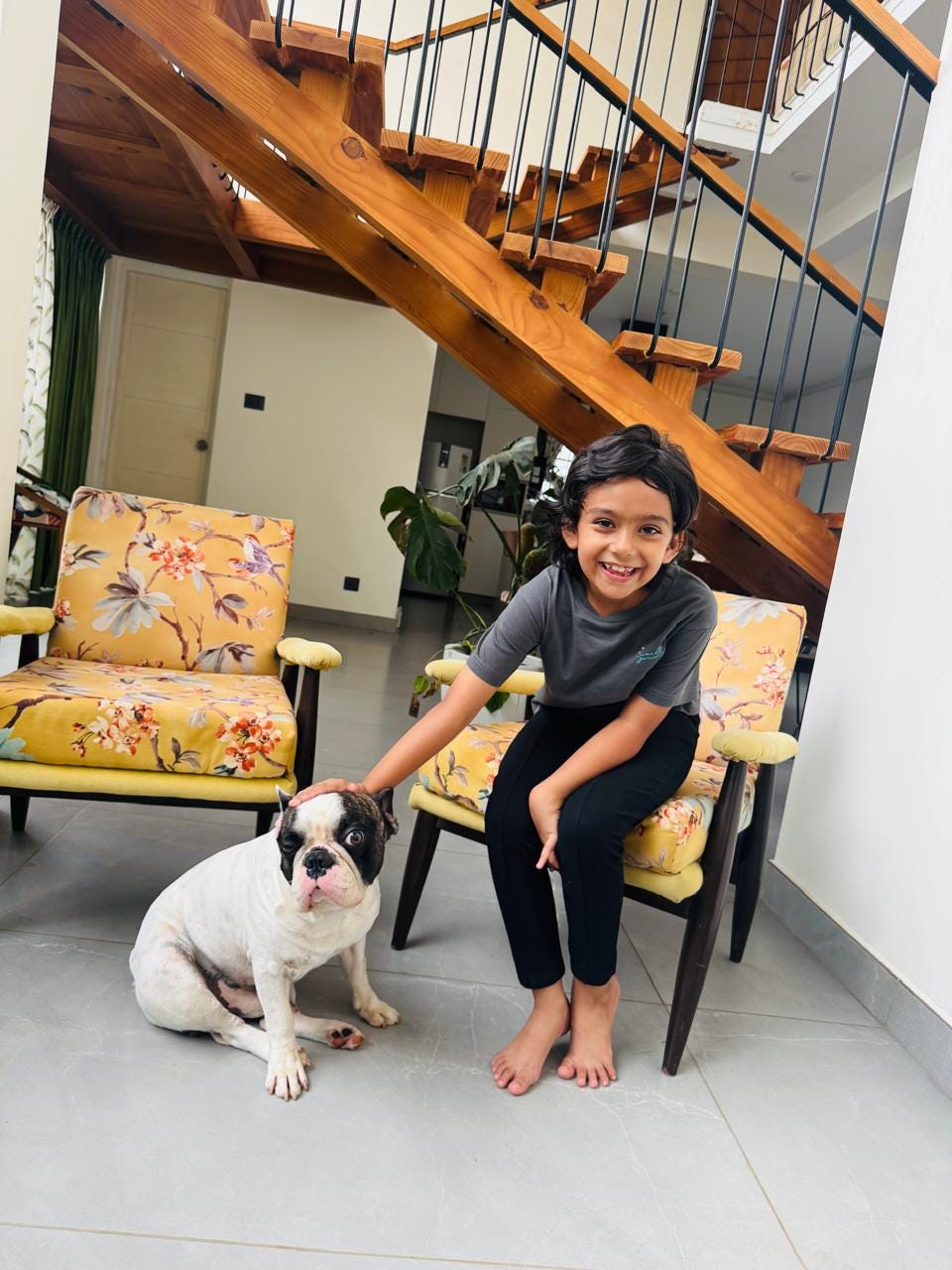
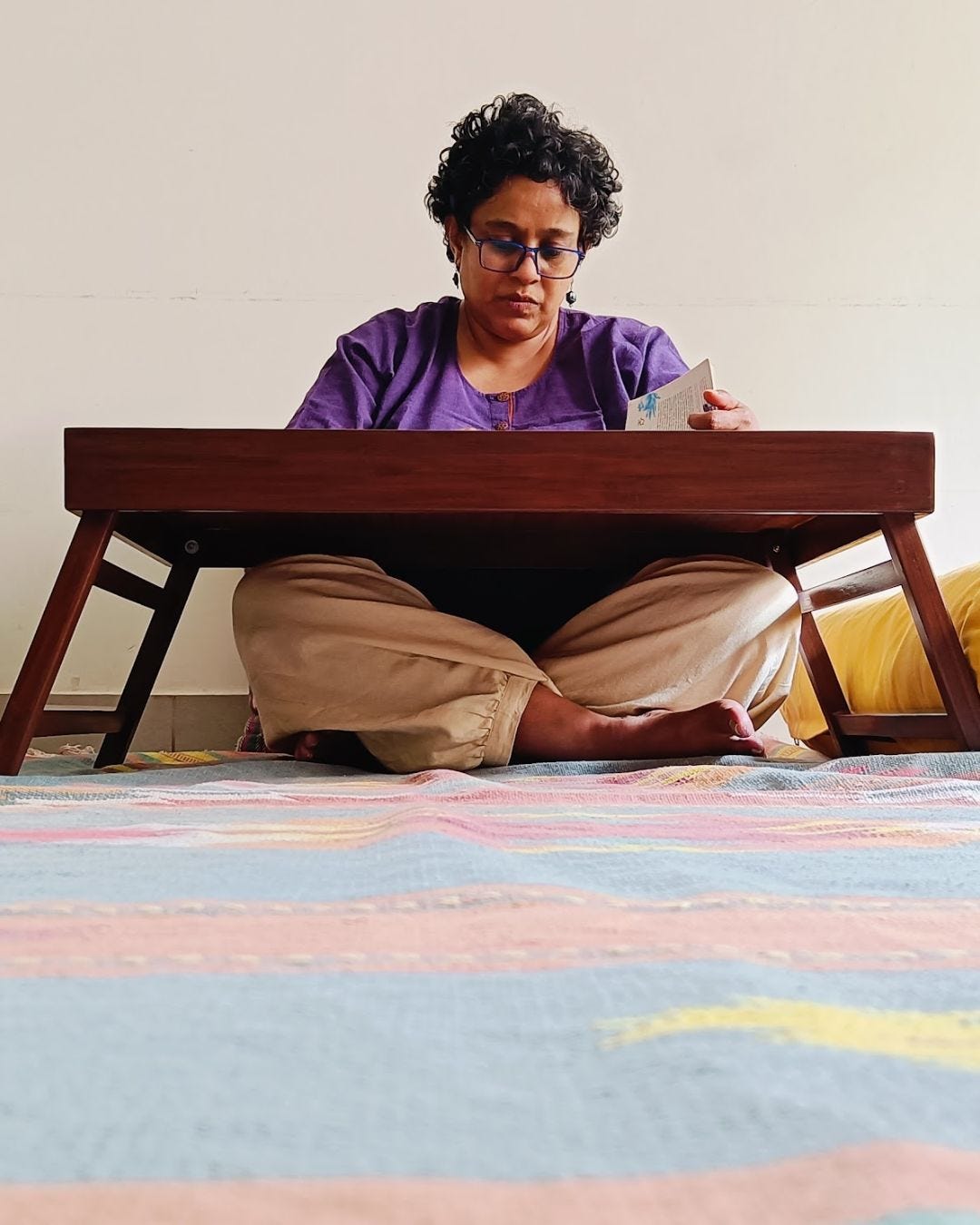

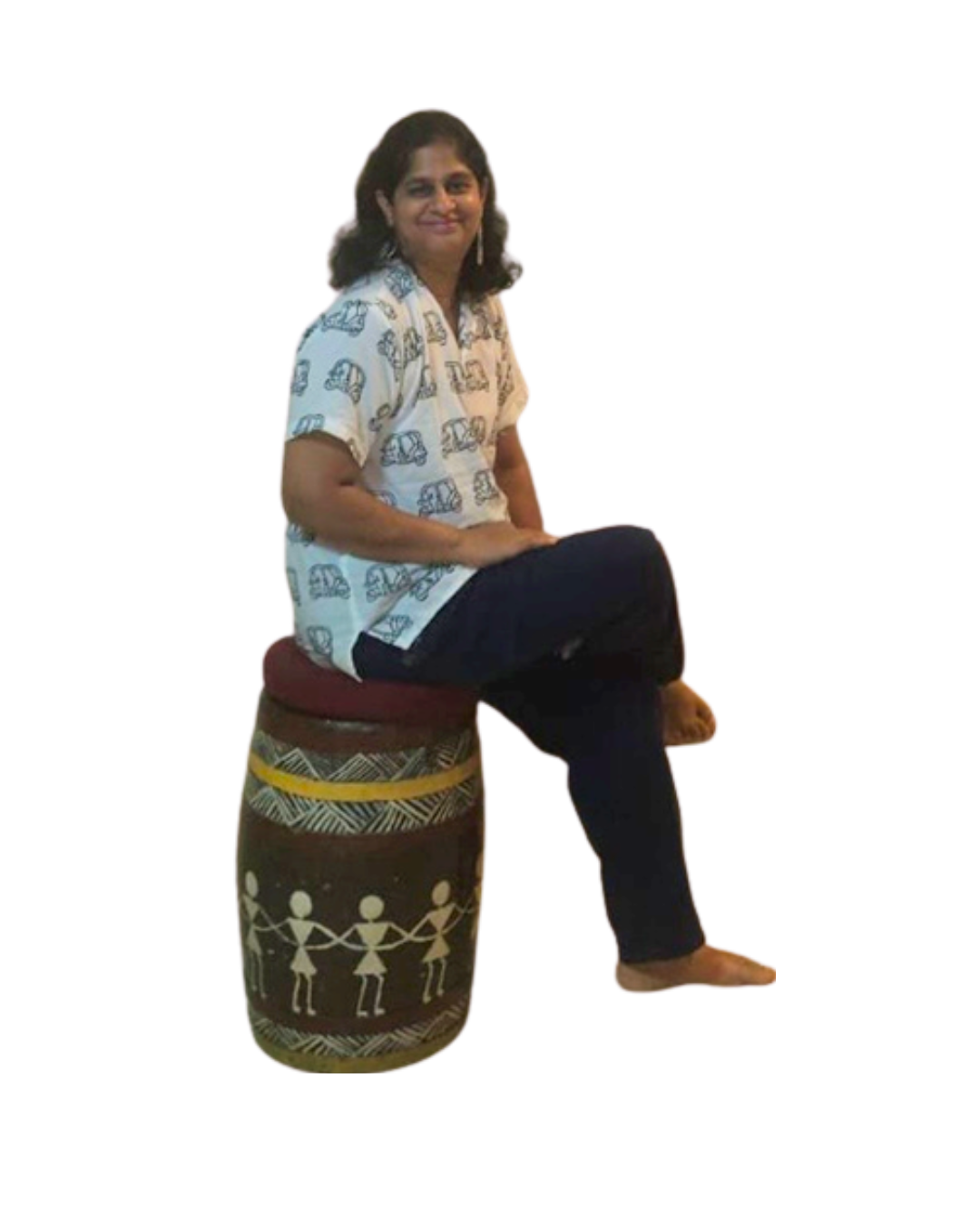
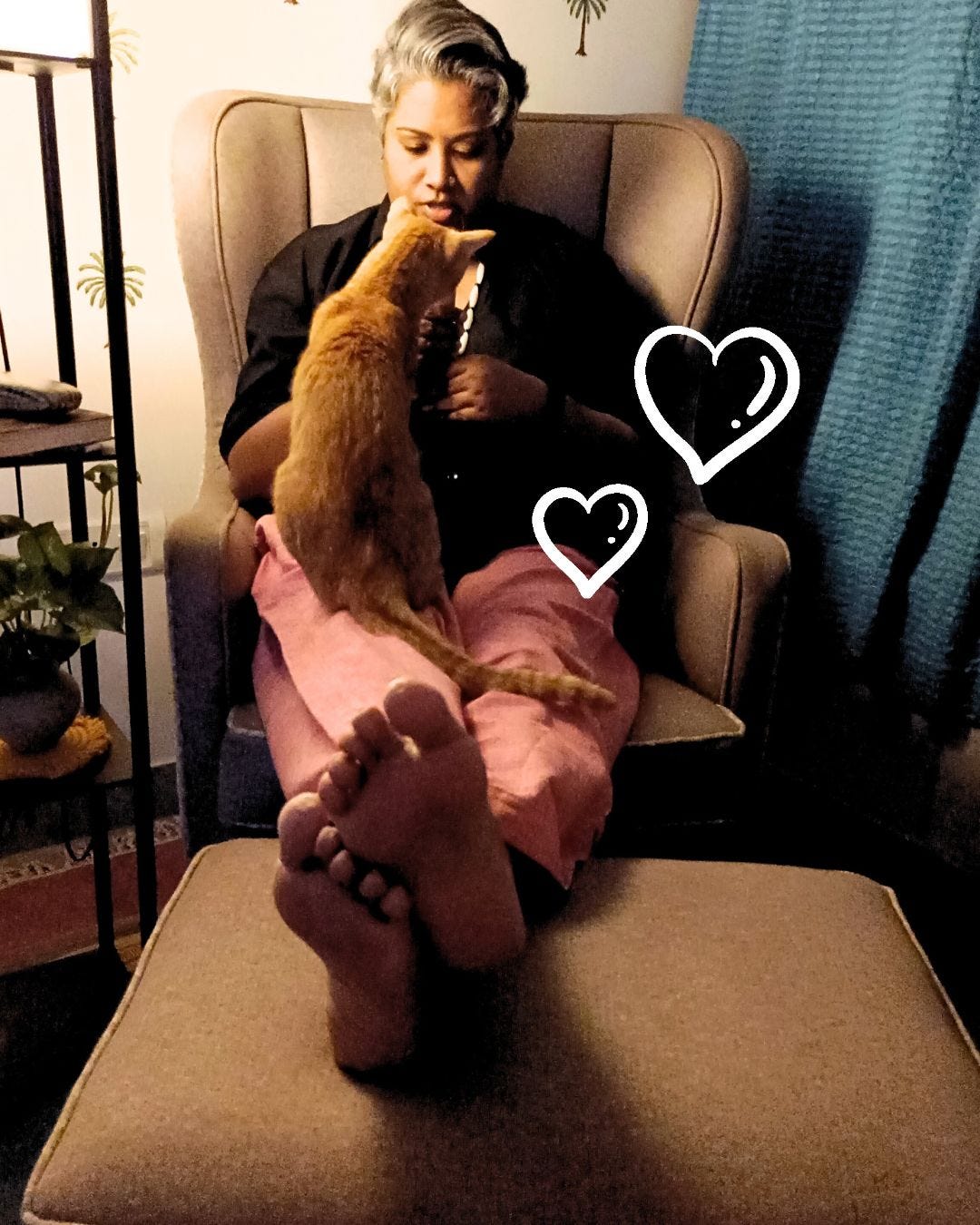
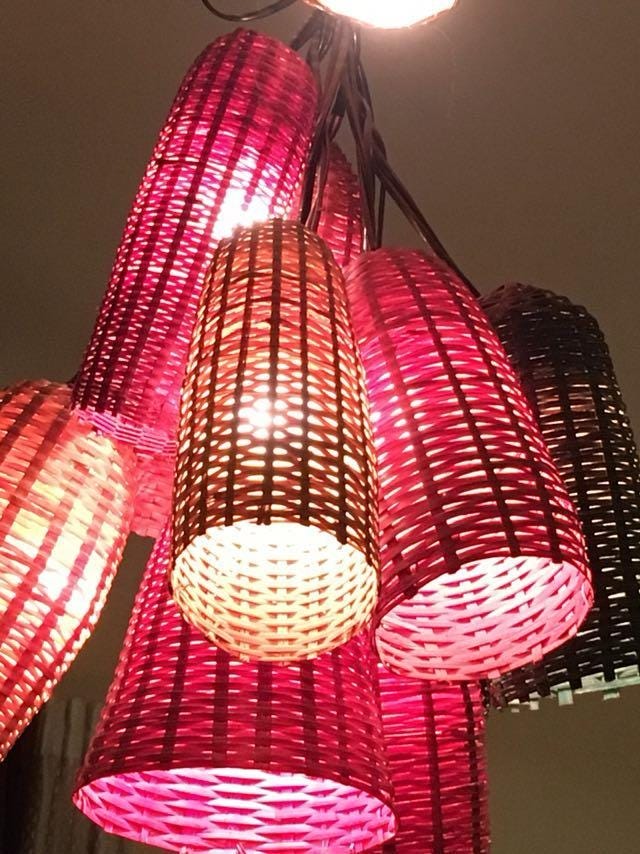
Hai ,so much love here for furniture and friends.
Such a warm and inviting writing prompt, can't wait to get started ❤️